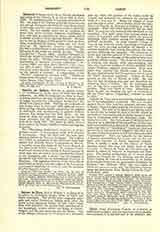

Cabello de Balboa, MIGUEL, a secular priest, b. at Archidona in Spain, dates of birth and death unknown. In 1566 he emigrated to Peru in South America; from here he went to Quito, Ecuador, where he began to write the “Miscelanea Antarctica”, finishing it at Lima in 1586. Nothing else is known of him except that, in the years 1602-1603, he wrote a letter giving valuable details concerning the regions of Pelechuco and Apolobamba in eastern Bolivia, between the Andes and the Beni River. In this letter he does not explicitly state that he visited those districts, but the information imparted is such as to imply this. The letter is taken from a book written by Father Cabello of which nothing else is known.
The “Miscelanea Antarctica”, however, is an important source. Unfortunately, most of it remains in manuscript. Only the third part has been published in French by Ternaux Compans. The original was (1853) in possession of the celebrated historiographer Don Joaquin-Garcia Ycazbalceta at Mexico. A complete copy also exists at the Lenox Branch of the New York Public Library. It contains Indian traditional records of the coming to South America of white men who are said to have preached the Gospel to the aborigines; also a theory that the Indians of Patagonia and Chile are the descendants of pirates of Macassar. The legendary history of the Inca tribe is expounded at length, and the origin of the Inca given in a manner somewhat at variance with the accounts of other Spanish authors.
AD. F. BANDELIER

